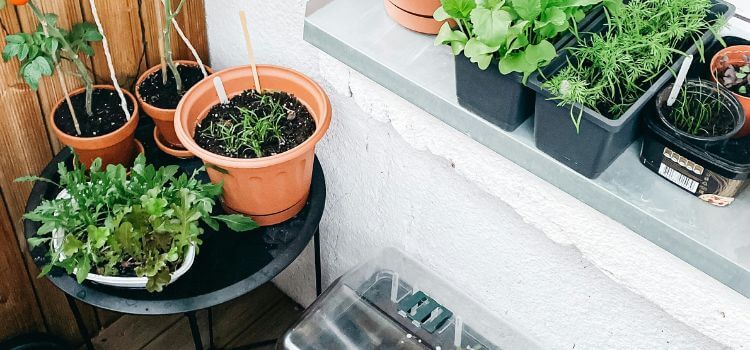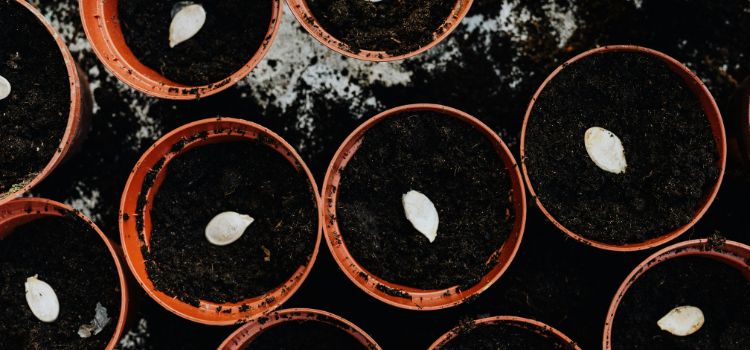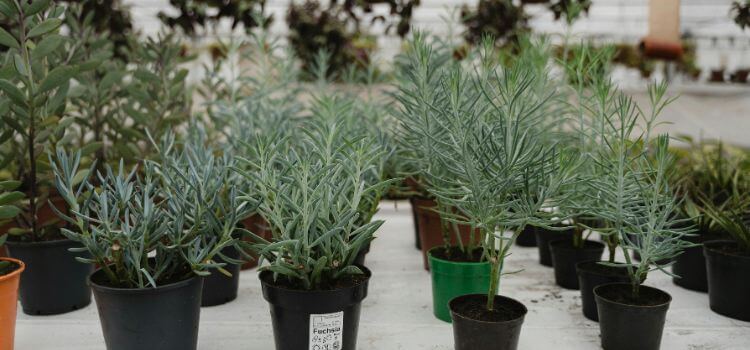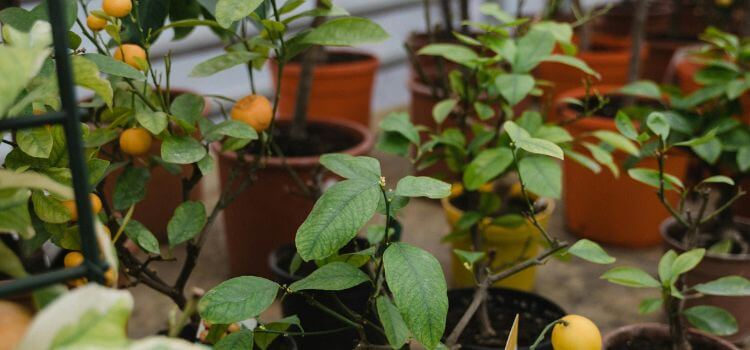As an Amazon Associate, I earn from qualifying purchases.
Container gardening is growing plants in containers instead of in the ground. It is ideal for small spaces.
Container gardening allows individuals to cultivate plants in limited spaces such as balconies, patios, or indoors. It offers plant placement and mobility flexibility, making it perfect for urban living. Gardeners can easily control soil quality, drainage, and sunlight exposure.
This method suits a variety of plants, including vegetables, herbs, flowers, and even small trees. Container gardening also reduces the risk of soil-borne diseases and pests. It’s an excellent option for beginners and experienced gardeners alike. With minimal effort, anyone can enjoy the benefits of gardening, regardless of space constraints. I have a container garden, and I share my experience.

What Is Container Gardening?
Container gardening is a fun and easy way to grow plants. You use pots, tubs, or other containers to grow your plants. This type of gardening is perfect for small spaces. You can place containers on patios, balconies, and even windowsills. It is an excellent choice for beginners and experienced gardeners alike.
Benefits Of Container Gardening
Container gardening is a fantastic way to grow plants in small spaces. It uses pots, barrels, or other containers to grow various plants. This method is perfect for urban dwellers or those with limited garden space. The benefits of container gardening include ease of access, space efficiency, and the ability to control the growing environment, making it a popular choice for many gardening enthusiasts.
Space Efficiency
Container gardening is very efficient with space. It allows you to grow plants where traditional gardening is impossible. Urban environments and small patios are perfect examples. You can place containers on balconies, rooftops, or even indoor spaces. This method uses vertical and horizontal space effectively. Here are some key points on space efficiency:
- Small footprint: Containers take up less ground space.
- Stackable: Containers can be stacked to save space.
- Portable: You can move containers to different locations.
Using containers, you can also grow various plants in a small area. This includes vegetables, herbs, and flowers. Multiple plants can coexist in one container, creating a mini ecosystem. Below is a table showing how many plants you can grow in different container sizes:
| Container Size | Number of Plants |
|---|---|
| Small (1-3 gallons) | 1-2 plants |
| Medium (4-7 gallons) | 3-5 plants |
| Large (8+ gallons) | 6-10 plants |
Accessibility
Container gardening is very accessible. It allows people of all ages and abilities to enjoy gardening. Raised containers are more accessible to those with mobility issues. They can be placed at a height that reduces bending or kneeling, making gardening more comfortable and enjoyable.
Additionally, containers can be set up in various locations, making them accessible to everyone. They can be placed on windowsills, porches, or even indoors. This flexibility means that even without a garden, you can still enjoy growing plants. Here are some ways container gardening improves accessibility:
- Easy to manage: Less weeding and maintenance.
- Control over soil: You can choose the best soil mix.
- Mobility: Move plants to get the best sunlight.
Container gardening can also create a beautiful and productive garden in any space, making it ideal for everyone, regardless of their living situation or physical abilities.
What Kind Of Containers Can I Use?
Container gardening is a fun way to grow plants. You can do it on a porch, balcony, or inside your home. Choosing the correct container is very important. It helps your plants grow healthy and strong. Let’s learn about the different kinds of containers you can use.
Material Options
Choosing the suitable material for your container is crucial. Each material has its benefits and drawbacks. Plastic containers are lightweight and cheap. They come in many shapes and sizes. Clay pots look nice and are suitable for plants that like dry soil. They can be heavy and break easily. Wooden containers are natural and look great in any garden. They can rot over time if not treated. Metal containers are durable and give a modern look. They can get very hot in the sun.
- Plastic – Lightweight, affordable, versatile
- Clay – Aesthetic, suitable for dry soil, fragile
- Wood – Natural look, can rot, needs treatment
- Metal – Durable, modern look, can get hot
Here is a quick comparison:
| Material | Pros | Cons |
|---|---|---|
| Plastic | Lightweight, affordable | May fade in sunlight |
| Clay | Good for dry soil | Fragile, heavy |
| Wood | Natural look | Can rot, needs treatment |
| Metal | Durable, modern | Can get hot |
Size Considerations
Picking the right size container is vital for plant health. Plants need space for their roots to grow. Small containers are suitable for herbs and small flowers. These containers need more frequent watering. Medium containers can hold a variety of plants. They are great for vegetables and more prominent flowers. Large containers can support trees and big shrubs. They are heavy and more challenging to move.
Here are some tips for choosing the right size:
- Small containers – Ideal for herbs, small flowers
- Medium containers – Suitable for vegetables, larger flowers
- Large containers – Best for trees, big shrubs
Remember always to check the plant’s requirements. Some plants need more space, and a larger container can help avoid root-bound problems. A good rule is to use a container at least twice the size of the root ball.
Soil And Drainage
Container gardening is a fun and rewarding way to grow plants. Choosing the suitable soil and ensuring proper drainage are essential to healthy plants.

Soil Types
Different plants need different types of soil. It is essential to know which soil is best for your plants. Here are some common soil types used in container gardening:
- Potting Soil: This is a mix designed for container plants. It contains peat, compost, and perlite.
- Garden Soil: This soil is taken directly from the ground. It is not always suitable for containers.
- Peat Moss: This soil is very light and holds water well. It is often mixed with other soils.
- Coco Coir: Made from coconut husks, this soil is eco-friendly and holds water well.
Choosing the right soil helps plants get the nutrients they need and affects how well the soil drains. Always check the soil’s pH level and nutrient content before planting.
Importance Of Drainage
Good drainage is crucial for healthy plants. Poor drainage can lead to root rot and other problems. Here are some ways to ensure proper drainage:
- Use Pots with Holes: Ensure your pots have drainage holes at the bottom.
- Add Gravel or Rocks: Placing a layer of gravel or rocks at the bottom of the pot helps water drain.
- Use Well-Draining Soil: Some soils drain better than others. Choose a mix that allows water to flow through easily.
Proper drainage helps prevent water from sitting at the bottom of the pot, keeping the roots healthy and happy. Always check the drainage before and after planting.
What Kinds Of Plants Can You Grow?
Container gardening is a fun way to grow plants. You can grow many kinds of plants in containers. It is easy and does not need a lot of space. This is great for people who have a small garden. You can grow flowers, vegetables, and herbs in containers.
Best Plants For Containers
Many plants grow well in containers. Herbs are a great choice. They are easy to grow and use in cooking. Some good herbs for containers are:
- Basil
- Mint
- Thyme
- Parsley
Vegetables are also a good option. They can be fun to grow and eat. Some great vegetables for containers are:
- Tomatoes
- Lettuce
- Peppers
- Radishes
Flowers add color and beauty to your space. They can make you happy and brighten your day. Some beautiful flowers for containers are:
- Petunias
- Geraniums
- Marigolds
- Pansies
Fruit plants can also grow in containers. These are fun to watch grow and taste good. Some fruit plants that do well in containers are:
- Strawberries
- Blueberries
- Lemons
- Dwarf apple trees
Seasonal Choices
Choosing plants for each season is essential. Spring is a great time to start planting. Some good spring plants are:
- Pansies
- Snapdragons
- Spinach
- Radishes
Summer plants love the heat. They need more water but grow fast. Some good summer plants are:
- Tomatoes
- Peppers
- Basil
- Marigolds
Fall is a more excellent season. Some plants do better in the cooler weather. Some good fall plants are:
- Chrysanthemums
- Kale
- Broccoli
- Carrots
Winter plants need to handle cold. Some can grow indoors if it is too cold outside. Some good winter plants are:
- Evergreens
- Winter pansies
- Spinach
- Kale
Watering Techniques
Container gardening allows people to grow plants in small spaces. This method is perfect for those living in apartments or with limited garden space. Understanding the right watering techniques is crucial for healthy plants. Proper watering ensures plants grow well and produce beautiful blooms or tasty vegetables.
Frequency
Watering frequency is essential in container gardening. Plants in containers dry out faster than those in the ground. This is because the soil in containers has less volume and drains quickly. Here are some guidelines for watering frequency:
- Daily check: Check the soil moisture every day. Stick your finger about an inch into the soil. If it feels dry, it’s time to water.
- Hot days: You may need to water more often on hot days. Sometimes, plants need water twice a day during extreme heat.
- Rainy days: During rainy weather, watering is reduced. The natural rain can provide enough moisture for your plants.
Morning watering is the best time. Watering in the morning allows plants to absorb moisture before the day’s heat, helping prevent diseases and keeping the plants hydrated. Evening watering is also an option, but it can lead to fungal issues if the foliage stays wet overnight.
Methods
Various methods can be used for watering container plants. The correct method can make a big difference in plant health.
- Top watering: This is the most common method. Pour water directly onto the soil surface. Make sure to water slowly to avoid runoff.
- Bottom watering: Place the container in a shallow tray filled with water. Let the plant soak up water through the drainage holes. This ensures even moisture and encourages profound root growth.
- Self-watering containers: These containers have a built-in reservoir. The plants draw water as needed. This method reduces the risk of overwatering and is very convenient.
Drip irrigation is another effective method. This system delivers water directly to the soil using tubes and emitters, saving water and ensuring that plants receive a consistent supply.
Watering cans and hoses are traditional tools. Choose a watering can with a long spout for easy reach. A hose with a gentle spray nozzle is also helpful for more extensive container gardens.
Fertilizing Tips
Container gardening is a fun and easy way to grow plants. Fertilizing is very important for the health of your plants. Proper fertilizing helps plants grow strong and healthy. This guide provides valuable tips on the types of fertilizers and how to apply them.
Types Of Fertilizers
There are two main types of fertilizers: organic and inorganic. Organic fertilizers come from natural sources like compost, manure, and bone meal. They improve soil health over time, release nutrients slowly, and keep plants fed for a long time. Some common organic fertilizers are compost, fish emulsion, and blood meal.
Inorganic fertilizers are made from chemicals. They provide nutrients quickly. These fertilizers are great for fast-growing plants. Some common inorganic fertilizers are N-P-K fertilizers, nitrogen, phosphorus, and potassium. These are the primary nutrients plants need. Inorganic fertilizers are easy to find in stores.
Application Methods
Applying fertilizers correctly is critical to plant health. There are a few methods to do this. One way is mixing the fertilizer with the soil. This helps the roots get nutrients directly. Another technique is top-dressing. Sprinkle the fertilizer on top of the soil. Water the plants so the nutrients soak in.
Liquid fertilizers can be mixed with water. A watering can is used to apply the mixture. This method is very effective for fast results. Foliar feeding is another method. Spray the fertilizer directly onto the leaves. This helps plants absorb nutrients quickly. Always follow the instructions on the fertilizer package. Too much fertilizer can harm your plants.
Pest Management
Container gardening offers a great way to grow plants in small spaces. However, managing pests is crucial for healthy plants. Knowing common pests and organic solutions can help keep your garden thriving. Let’s explore how to manage pests in container gardens.
Common Pests
Many pests can harm your container garden. Here are some common ones:
- Aphids: Small, green insects that suck plant sap.
- Spider Mites: Tiny red or brown pests that create webs on leaves.
- Whiteflies: Small white insects that fly around plants when disturbed.
- Slugs and Snails: These pests chew on leaves and stems.
Identifying these pests early can save your plants. Regularly check the undersides of leaves and stems. Look for signs like holes, webs, and sticky residue. Monitoring your plants is the first step to effective pest management.
Organic Solutions
Using organic methods helps keep your garden safe and healthy. Here are some practical solutions:
- Neem Oil: This natural oil repels many pests. Mix with water and spray on plants.
- Soap Spray: Mix water and mild soap. Spray on leaves to kill aphids and mites.
- Companion Planting: Plant herbs like basil and mint. They repel pests.
- Diatomaceous Earth: Sprinkle this powder around plants. It deters slugs and snails.
These methods are easy to use and safe for your plants. Regular application ensures pests stay away. With these organic solutions, keeping your container garden pest-free is possible.
Seasonal Care
Container gardening is a fun and flexible way to grow plants. It allows you to garden in small spaces like balconies or patios. Seasonal care is crucial to ensure your plants thrive all year round. By following specific strategies for each season, you can help your plants stay healthy and beautiful.
Summer Strategies
Summer brings longer days and warmer temperatures. This is great for many plants, but it also poses some challenges. Here are some tips to keep your container garden thriving during summer:
- Water regularly: Plants in containers dry out faster. Water them daily or even twice a day.
- Mulch your soil: Adding a layer of mulch helps retain moisture and keeps the soil cool.
- Move containers to shade: Some plants might need relief from the midday sun.
- Fertilize often: Frequent watering can wash away nutrients. Use a balanced fertilizer every two weeks.
- Check for pests: Warm weather can attract pests. Inspect your plants regularly and take action if needed.
These simple steps can help your plants survive the heat. Keeping them hydrated and fed is critical. Don’t forget to check for pests, which can quickly damage your hard work.
Winter Preparations
Winter can be harsh on container plants. Cold temperatures and frost can damage or kill them. Preparing your garden for winter is essential. Here are some tips to protect your plants during the colder months:
- Bring sensitive plants indoors: Some plants can’t handle the cold. Move them inside before the first frost.
- Insulate your containers: Wrap pots with bubble wrap or burlap to keep roots warm.
- Reduce watering: Plants need less water in winter. Water them less often to prevent root rot.
- Group containers together: Placing pots close to each other provides warmth. They can protect each other from the wind.
- Cover plants: Use frost cloths or old blankets to cover plants during freezing nights.
These measures can help your plants survive the winter. Bringing them indoors, insulating the pots, and reducing watering is essential. Grouping containers and covering plants provide extra protection. With proper care, your container garden can weather the cold months.

Frequently Asked Questions
What Is Container Gardening?
Container gardening involves growing plants in containers instead of on the ground. It’s ideal for small spaces. Pots, boxes, or any container that holds soil are suitable containers. It’s versatile and convenient.
Which Plants Are Best For Container Gardening?
Herbs, vegetables, and flowers thrive in containers. Basil, tomatoes, and petunias are popular choices. Choose plants that match your sunlight and space. Check plant tags for container suitability.
How Often Should I Water Container Plants?
Container plants usually need daily watering. The soil dries out faster than in the ground, so check the soil moisture regularly and water when the top inch is dry.
What Type Of Soil Is Best For Containers?
Use a high-quality potting mix. It retains moisture and provides nutrients. Avoid garden soil, which can compact and hinder growth. Look for mixes with perlite or vermiculite for aeration.
Conclusion
Container gardening is a versatile and rewarding way to grow plants. It’s perfect for small spaces and urban settings. With the proper techniques, anyone can enjoy fresh flowers, herbs, and vegetables. Start your container garden today and experience the joy of cultivating your green oasis.
Happy gardening!

